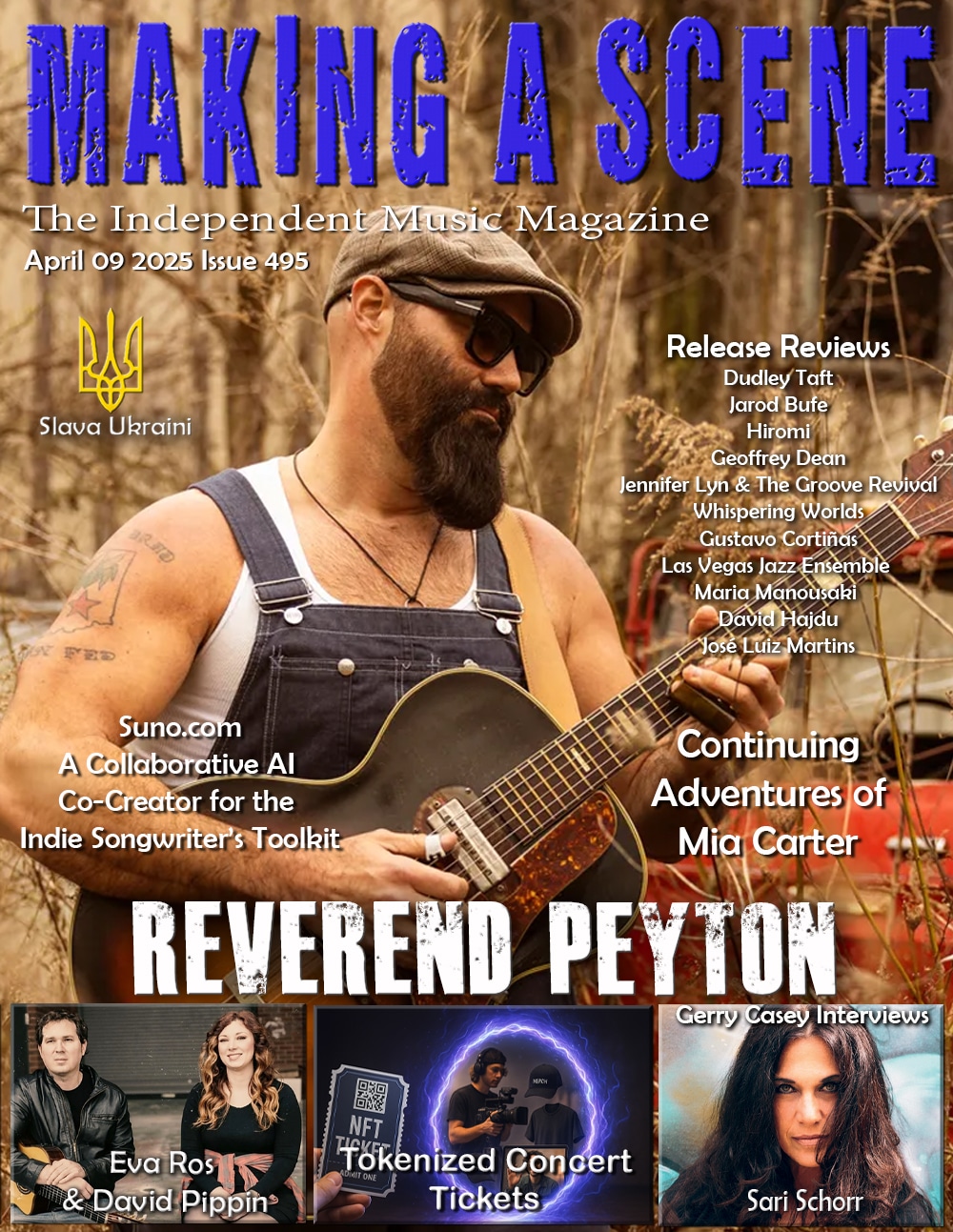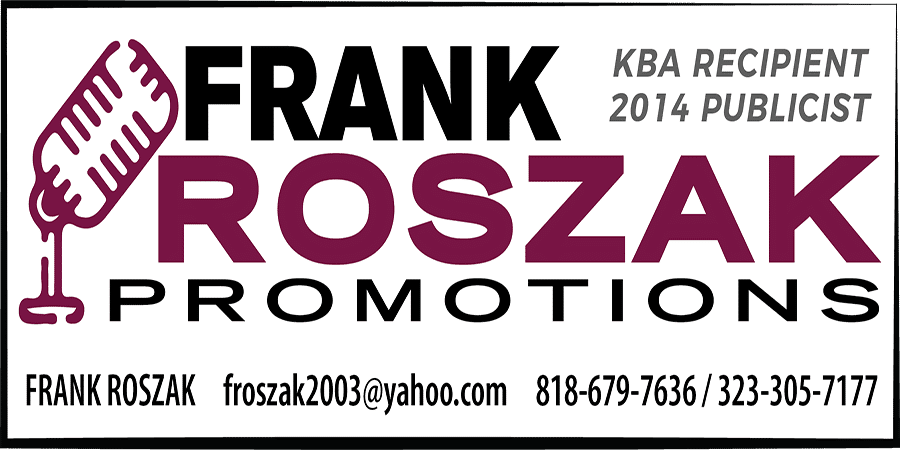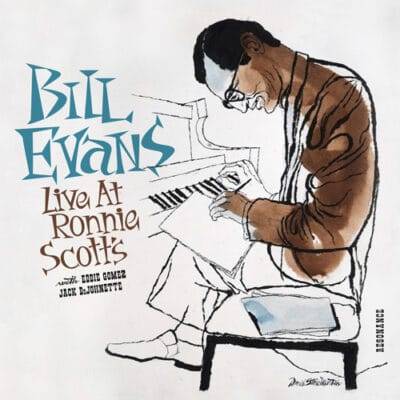Bill Evans Live at Ronnie Scott’s
Bill Evans
Live at Ronnie Scott’s (with Eddie Gomez and Jack DeJohnette)
Resonance
Ah, Black Friday is here. This one features legendary, influential pianist Bill Evans across 20 tracks live at London’s iconic Ronnie Scott’s in 1968 with his short-lived but remarkable trio of Jack DeJohnette and Eddie Gomez, who were at Scott’s for a month-long residency. It is yet another discovery from the “Jazz Detective” Zev Feldman and is one of his four efforts (also Sonny Rollins, Monty Alexander, George Coleman) for Record Store Day. All except Coleman’s appear on the Resonance label. It is become a tradition for Feldman to team with others in releasing unissued archival recordings for this special day and on this one, Bill Evans Live at Ronnie Scott’s, he teams with Jack DeJohnette as co-producer. The recordings will be available on Record Store Day as a tow-LP set and in CD and digital on December 4. This is the third Resonance collection of unissued material featuring this widely acclaimed trio – Some Other Time: The Lost Session From the Black Forest (2016) and Another Time (2018). This is the fifth title of unreleased Bill Evans material from the label. As with all Feldman releases the deluxe package has a multi-page booklet of rare photographs, interviews, and essays. Interviews are with Gomez, DeJohnette, Chick Corea, and Evans’ good friend Chevy Chase, as well as an authoritative essay by renowned critic Brian Priestley, who was present at the performances.
These unissued recordings usually bring with them a story and this is no exception. Feldman writes, “In 2013, my colleague and associate, Steven Reich, introduced me to the family of Hans Georg Brunner-Schwer. This introduction led eventually to Resonance’s 2016 release of Some Other Time….HGBS oversaw the original recording sessions for Some Other Time, which he recorded in MPS’s legendary studio in the Black Forest in 1968, shortly before this material was recorded in London. In the course of interviewing Jack DeJohnette for Some Other Time, as is my practice, I asked him if he had any interesting tapes. To my surprise, he told me he had recordings of the Bill Evans Trio form the now-legendary Ronnie Scott’s, but that the audio was quite poor. Of course, this piqued my interest, but at time, it seemed clear that the recording was not up to our technical standards for release.” Feldman continued his pursuit, especially after hearing from people who attended the 1968 shows reporting how cohesive and expansive the trio was.
Fast forward to 2018 when Feldman visited DeJohnette in upstate New York, later learning that they hadn’t been listening to the tapes correctly, as they were initially trying to listen to multi-track tapes. Once they got the tracks sorted out the inspiring music came alive. To be fair, you’ll hear the piano and bass very well in these recordings but DeJohnette’s drums are lower in the mix, explained in his conversation with Chick Corea, “I was recording it with what was, at this time, a hip recorder. I stuck the mic in the piano near Eddie’s bass and it recorded the piano, bass, and the drums leaked in. and Bill was really stretching. But playing there a month is why it was so good. You had a chance for the group to develop and get used to the sound in the room, feel comfortable to experiment and take chances.”
Recordings by the Evans-Gomez-DeJohnette lineup are as prized as they are rare. DeJohnette was an especially simpatico accompanist for Evans, for he had been a pianist before taking up the drums. Despite their chemistry, the trio played together for a mere six months. During their stay at Scott’s, Miles Davis stopped in to check out the band, and the trumpeter swiftly recruited DeJohnette for his new group. By the end of 1968, Morell was hired by Evans as his replacement, and he drummed behind the pianist through 1974.
Distinguished British critic, author, broadcaster, and pianist Brian Priestley, who witnessed Evans’ ’68 trio in action, puts the London stand and Evans’ then-current repertoire in context with the headline to his piece reading – “When Bill Evans is in town, one goes not so much to listen as to worship”. He writes that the performances’ “compelling, indeed at times overwhelming, musical quality is such as to impress this listener all over again.” To this writer, three things especially stand out – Evans’ animated playing, the cohesiveness of the trio, and Eddie Gomez’s lyrical, emphatic, creative bass playing. DeJohnette, even at this early stage of his career, was already one of the most imaginative drummers in jazz, but his sound here, as mentioned, just bleeds in.
There are twenty tracks here and we’ll highlight a few of them. Many of these are standards, some show tunes, as the opening “A Sleepin” Bee,” was in Evans’ repertoire in the mid-sixties but lay dormant until his performance at Montreux in ’68, captured on the only regularly issued recording of this trio, Verve’s Bill Evans at the Montreux Jazz Festival. There are two versions of “You’re Gonna Hear From Me,” written to be mimed by Natalie Wood in the 1965 movie Inside Daisy Clover. “Yesterdays’ is especially animated and apparently rarely played, here featuring an especially sharp Gomez solo.
Evans has been playing “My Man’s Gone Now” since 1961, possibly inspired by Miles Davis’ Porgy and Bess album. This interpretation departs from the original slow waltz and hints at double-time, giving six beats to Gershwin’s 33 bars. “Emily,” written by Johnny Mandel has long been associated with Evans and appears in two versions. “Embraceable You” is an amazing vehicle for Gomez’s extended soloing. A definitive highlight is the closer of the first set, “Someday My Prince Will come,” featuring exchanges with DeJohnette at the end.
“Quiet Now,” often done solo in previous recordings, gets an elegant trio treatment. “Stella By Starlight,” first recorded with Miles, gets a new take here while the movie-sourced “Alfie” has Evans improvisations blurring memories of the familiar vocal. The last three are quintessential tunes performed by Evans: the now iconic “Waltz for Debbie, dedicated to his niece, the standard “Autumn Leaves,” recalling the recording with bassist Scott LaFaro, Portrait in Jazz; and Evans’ usual set closer “Nardis.” The tune, written by Miles (who never recorded it), was first recorded by Evans under the leadership of Cannonball Adderley. This one features another bass solo, and more exchanges with DeJohnette, who eventually takes a brief solo. In latter years, this was the chance for the drummer in the trio to stretch out. The sequencing may not be exactly as the sets unfolded but there are two clear sets here.
Perhaps the most unexpected element of the package is an extensive interview with the great comic actor and jazz buff Chevy Chase. He encountered Evans’ music as an underage jazz club-goer and began a friendship with the pianist as a student at Bard College, where he played in a band with classmate Donald Fagen of Steely Dan.He tells Feldman that Evans’ music was “the most lyrical jazz you could ever hear, in terms of jazz that wasn’t sung. It was just beautiful. And yet, very complex. Everybody I know tried to be Bill, but all you have to do is put a little video of Bill on or a record and say, ‘Try that.’ He really had a touch on the piano that he couldn’t match.”
Gracing the cover of both the LP and CD iterations of Live at Ronnie Scott’s is artwork drawn from a never-before-published, one-of-a-kind lithograph by the late, legendary artist/illustrator David Stone Martin, whose distinctive interpretations of jazzmen in action were featured on dozens of classic jazz LPs, notably including many for Norman Granz’s labels of the ‘40s and ‘50s.
This is must have for Evans collectors and as good a live piano trio recording as one will hear. Even the relatively uninitiated will understand why Evans is held in such high esteem.
- Jim Hynes
Buy Us a Cup of Coffee!
Join the movement in supporting Making a Scene, the premier independent resource for both emerging musicians and the dedicated fans who champion them.
We showcase this vibrant community that celebrates the raw talent and creative spirit driving the music industry forward. From insightful articles and in-depth interviews to exclusive content and insider tips, Making a Scene empowers artists to thrive and fans to discover their next favorite sound.
Together, let’s amplify the voices of independent musicians and forge unforgettable connections through the power of music
Make a one-time donation
Make a monthly donation
Make a yearly donation
Buy us a cup of Coffee!
Or enter a custom amount
Your contribution is appreciated.
Your contribution is appreciated.
Your contribution is appreciated.
DonateDonate monthlyDonate yearlyYou can donate directly through Paypal!
Subscribe to Our Newsletter
Discover more from Making A Scene!
Subscribe to get the latest posts sent to your email.














































